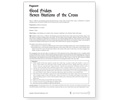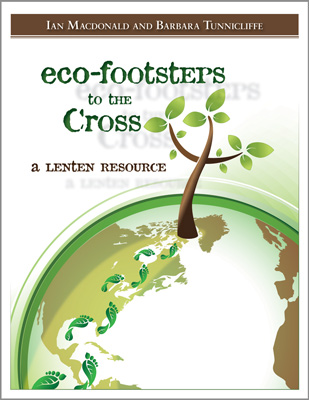
This is a reflective and dramatic process that tells the story of the events of Good Friday using a combination of scripture readings, props, and sounds. Includes an arriving activity to assist in preparation.
Preparation: medium-maximum
Cast/Characters: 8-10 adults
Scenes: 7
Main Props: wood lathing cut/sanded, tacks, hammers, telephone wire, blanket/sheet, bell/gong
Seasons of the Spirit , Publisher

Good Friday:
Seven Stations of the Cross
This is a reflective and dramatic process that tells the story of the events of Good Friday using a combination of scripture
readings, props, and sounds. Includes and Arriving Activity to assist in preparation.
Preparation: medium-maximum
Cast/Characters: 8-10 adults
Scenes: 7 (5pp)
Main Props: wood lathing cut/sanded, tacks, hammers, telephone wire, blanket/sheet, bell/gong
The Stations of the Cross is a reflective and dramatic process that tells the story of the events of Good Friday, using a combination
of scripture readings, props, and sounds. The story begins where last night’s Maundy Thursday events leave off.
Prayers about contemporary experiences of crucifixion are woven into the telling of the story. These stations can be very simple
or they can be quite labour intensive. Be sure to choose the process that will be best for your situation. Assign various people to
coordinate the readings and the props for each station. This could be done by a group of young people.
The stations can be done in one of two ways:
- The people move to stations in different parts of the church including outside areas. Actors dramatize the story.
- The people form a circle and the stations take place in the centre of the circle. As the story is read children show objects around the circle and then place them in the centre of the circle. In this form, even the youngest non-reader can play an effective role.
The congregation does not need orders of worship, but it will be important for the worship leaders to have a complete outline
of what will take place. The story will provide the structure and inform everyone about what will be happening next. This is not
intended to be an overly solemn event even though the subject matter is quite serious. We must never forget that all our children
will participate with enthusiasm because they are being given lots to do. This is what we want. Try not to impose an attitude
upon them but let them discover true moments of respect and awe through the drama of the story itself.
Preparation:
- Gather together all the props required: a purple robe, a thick rope, a scourge (a whip with a handle), a crown of thorns, a large wooden cross with stand to hold it upright, small bowls of warm, slightly salted water, nails and hammer, wine cup, a sign that reads “King of the Jews,” self-stick notes and pencils, a black piece of cloth, a chime or gong, a drum, long white cloth, small bowls of spices (cloves, cinnamon, allspice, etc.), and an icon of Jesus.
- Ask someone in the community with a wood workshop to pre-cut and bring a large assortment of varying lengths of wood lathing that have been sanded smooth. Also bring tacks, several hammers, 12 in. (30 cm) lengths of telephone wire, and a blanket or sheet. If you are expecting a large group, make some of these crosses ahead of time.
- Meet ahead of time with leaders, assign each one with responsibility for each station, assign roles and provide all with a complete outline of what will take place. Choose one person to be the leader of the people at each station.
- Adapt the bidding prayers to connect with the specific realities of the community within which this worship will be taking place.
- Make sure all the props are preset before the service begins.
- Set up an area close to the worship space for making crosses.
- Have hot cross buns available for coffee hour afterwards.
Arriving Activity: As people gather for the service, invite children and all those who wish to come to the cross-making area and make a small cross from two pieces of wood. If there is time, invite them to make more than one cross. Collect all the crosses into a large blanket or sheet.








